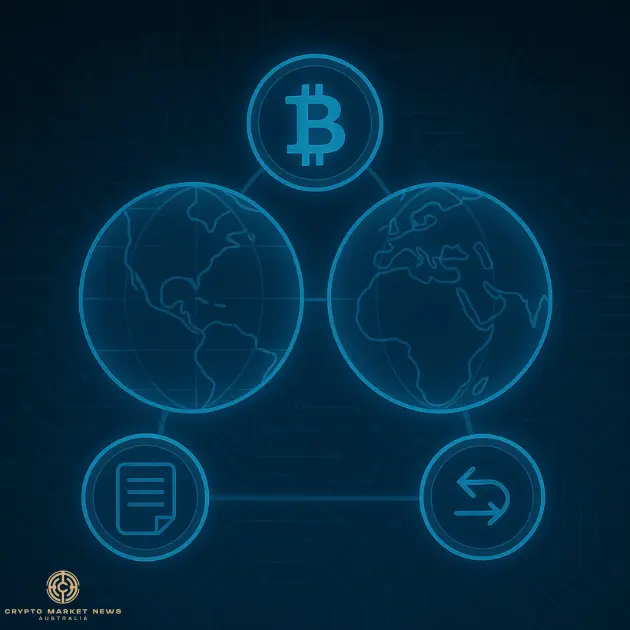If you look at any crypto news outlet, you will no doubt find talk of stablecoins. They might feel a bit overwhelming to those who only have a peripheral understanding of digital assets, but there have been interesting developments that lay the groundwork for a more promising, open crypto world.
With years of uncertain regulatory compliance behind digital assets like crypto, the U.S. passed the first major piece of legislation pertaining to crypto: the Guiding and Establishing National Innovation for US Stablecoins Act – also known as the GENIUS Act. Combined with Europe’s Markets in Crypto Assets (MiCA) regulation, the global landscape for crypto is changing – but how?
What is a Stablecoin?
Before we can get into the role of MiCA and the GENIUS Act, it helps to know what a stablecoin is in the first place. What we generally know about crypto is that it is extremely volatile and unsteady.
With the implantation of stablecoins, the goal is to create a digital asset type that maintains solid, stable value because it is pegged to more traditional reserve assets, generally a fiat currency like the U.S. dollar.
Stablecoins offer a low-cost, secure, fast way to exchange value on a global basis across blockchain technology. The stablecoin market has seen massive growth in just a few short years, essentially becoming a cash proxy in the digital assets space while also becoming quite prominent when it comes to cross-border payments.
What is the GENIUS Act and What Does it Do?
First and foremost: what the GENIUS Act does. To put it simply, it was created in order to create a clearer regulatory framework for payment stablecoin issuers that are backed by the U.S. dollar. This framework should help these companies, as well as consumers and traditional financial institutions, be able to navigate the world of stablecoins with greater clarity.
Under the Act, issuers are required to back any stablecoins with 1:1 reserves of short-term Treasuries or cash while also disclosing their current reserves on a monthly basis. The GENIUS Act also provides legal protections to stablecoin holders should the issuer end up going insolvent while also setting boundaries on what constitutes a stablecoin issuer.
The Key Features of the GENIUS Act
In order to gain a better understanding of what the GENIUS Act brings to the table, it helps to know what its key features are. Let’s break them down individually:
Non-rehypothecation. Issuers are not allowed to use their reserves to fund any other investment type unless it has been given a specific exception.
Non-interest bearing. Issuers are forbidden from offering interest or yield on their issued stablecoins.
Reserves and transparency requirements. All stablecoin issuers are required to hold 1:1 reserves for any stablecoins issued. Reserves are comprised of low-risk assets like cash, short-term Treasuries, or similar assets. Issuers are also subject to submitting reserves on a monthly basis.
AML and KYC. Under the Act, both banks and non-bank issuers are required to comply with uniform KYC and AML rules in order to provide greater customer protection.
Clearer regulatory oversight. The Act also provides significant clarification as to which regulators oversee stablecoin issuers based on affiliation and type of the user, making use of both state and federal regulators.
Consumer protections. Should an issuer declare bankruptcy, holders of those stablecoins get priority claims even over creditors when it comes to reclaiming debts owed by the stablecoin issuer.
Necessary as Stablecoin Use Cases Grow
Why was there a need for greater regulation? Part of this move has to do with growing use cases as it pertains to stablecoins. Stablecoins are being used to support decentralised finance (DeFi) activities and to trade in crypto, but there is more to it than that.
Cross-border payments. The biggest use case for stablecoins is in the world of cross-border payments. Using traditional methods, payments can take several days to settle and require a litany of middlemen. Stablecoins are ideal for consumer remittances, corporate treasury activities, and B2B payments, all with faster speeds and lower fees.
USD access for emerging markets. Global adoption of stablecoins is certainly a driving factor. Stronger infrastructure in terms of regulations should see the USD continue to reach into underdeveloped markets.
Payment processing. Transferring payments through traditional providers can be costly and take much longer than utilising stablecoins across any number of platforms. Individuals and financial institutions are able to streamline global payouts as a result.
Asset settlement. Now that stablecoins are undergoing greater regulatory oversight, banks and large institutional investors are showing greater confidence in stablecoins and other digital assets.
MiCA – Europe’s Regulatory Answer to the GENIUS Act
The United States is not alone in its move to impose clearer regulations on the digital assets market. The European Council and European Parliament created the Markets in Crypto Assets (MiCA) regulation as a response. The move is anticipated to have a major impact on issuers in the European Union as well as financial institutions for providers based outside of the EU.
All parties are required to comply with legal requirements and must be licensed in order to issue stablecoins. All crypto service providers will be required to provide information on their respective climate and environmental footprints as well.
MiCA is part of the overall “EU digital finance package” aiming to provide support for future digital finance innovation and competition while attempting to mitigate the risks. These regulations apply to any crypto assets that don’t fall under current financial services legislation. This includes the Markets in Financial Instruments Directive (MiFID). MiCA will more specifically apply to stablecoins and crypto assets in the EU.
Crypto Issuers and Asset Service Providers
Issuers of very specific types of crypto assets will be required to disclose any and all relevant information as it relates to those assets and must publish a white paper on that information. On top of that, issuers will be required to explain why other crypto assets shouldn’t be considered financial instruments.
Additionally, crypto asset-related services – brokers, custodian wallet providers, and exchanges – are required to be fully licensed, also called an “EU passport”. Requirements can vary depending on the type of CASP, but MiCA has strict governance standards and prudential requirements. There will be additional guidance from the European Banking Authority (EBA).
What Does It All Mean?
At the end of the day, the goal of advancement in regulatory governance is an attempt to prevent future de-pegging of stablecoins. We already saw massive turmoil in the market during 2022, but the market has grown exponentially since, creating the need for greater consumer and investor protections, fiscal stability, market integrity, cyber security, and financial integrity.
The hope is that these moves will create a safer landscape and lower barriers for investors who may have been reticent to get involved in this type of investment. For the first time in a long time, it feels like the digital assets marketplace is looking more stable than ever.

